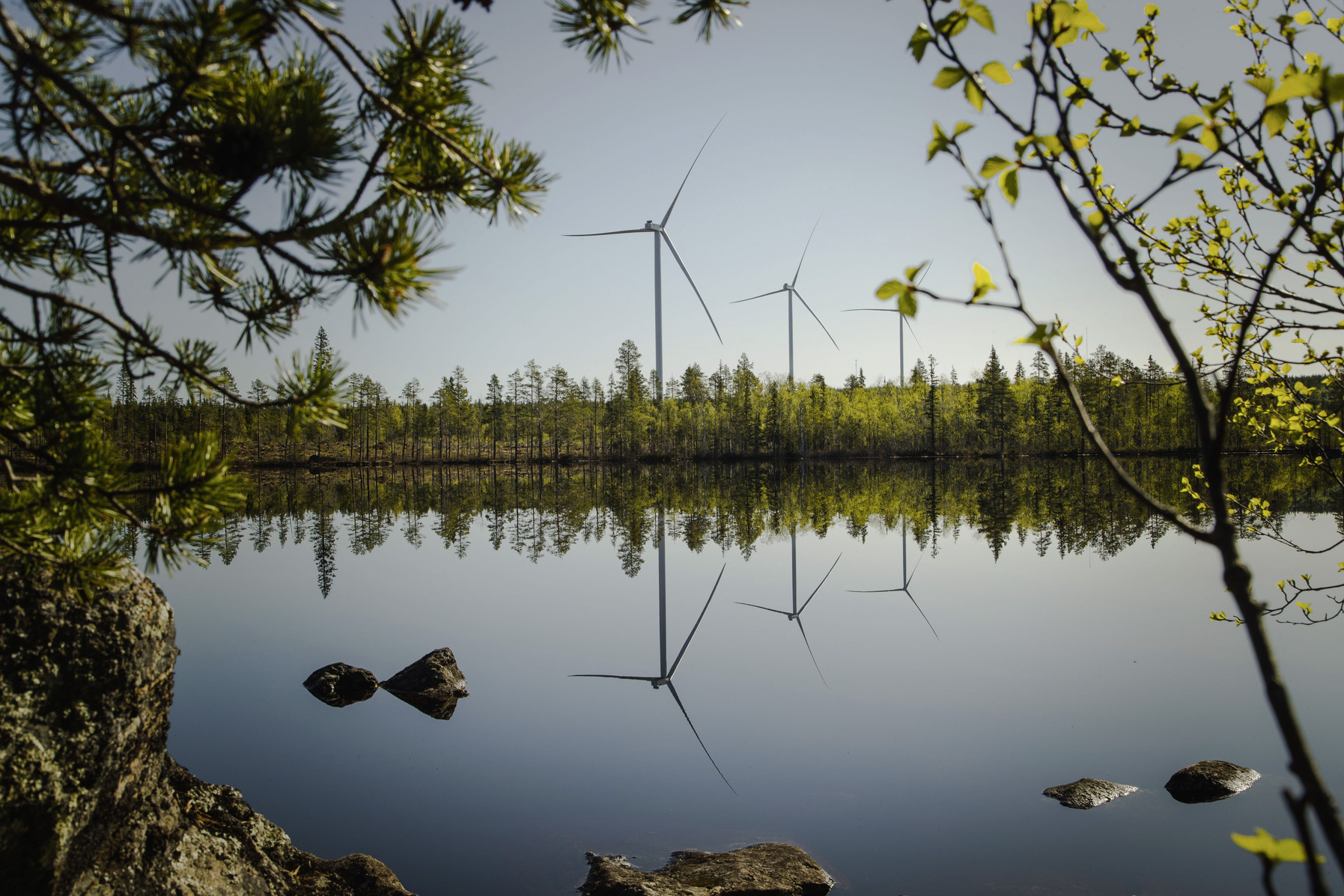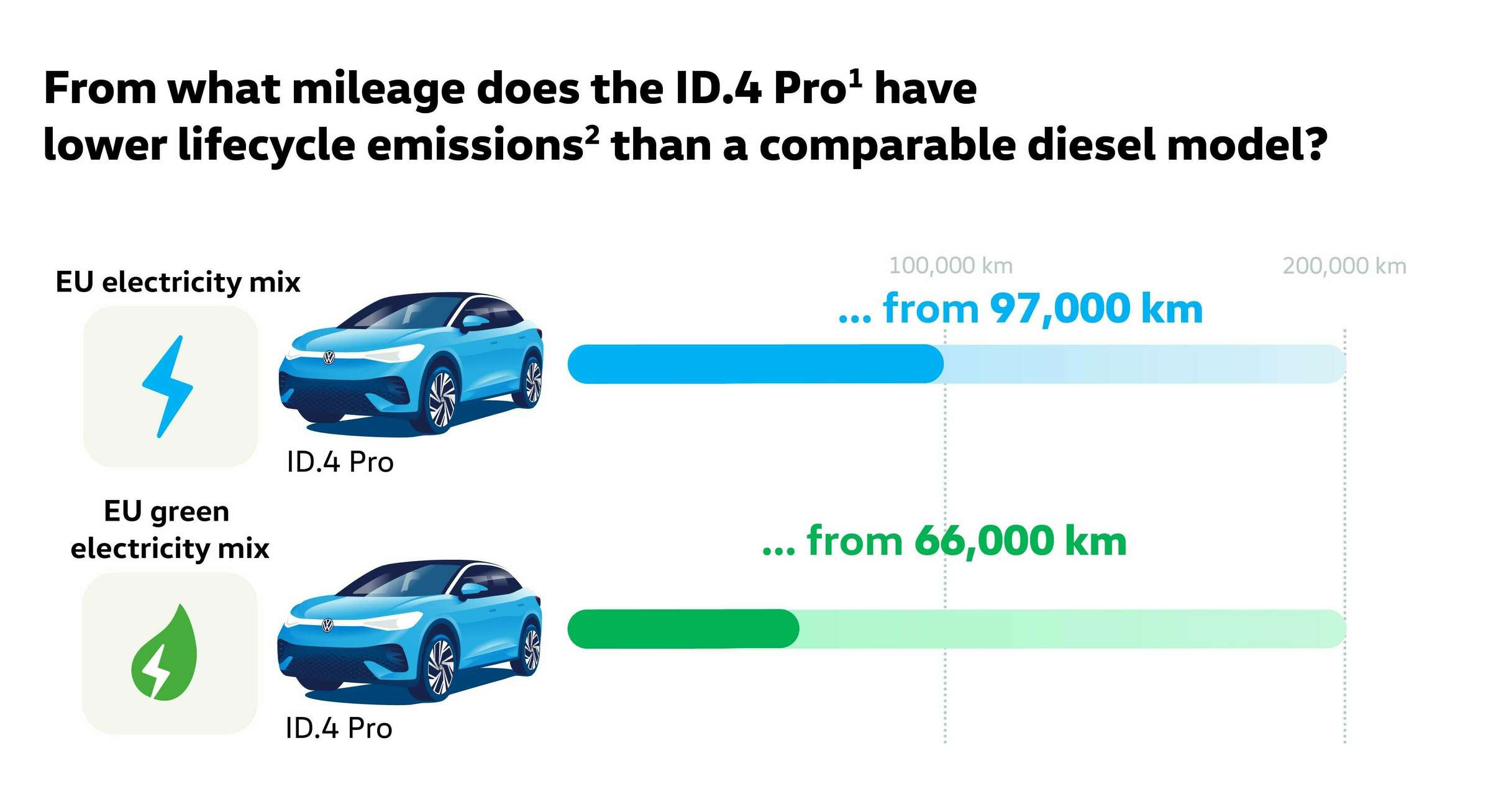
Sign up for daily news updates from CleanTechnica on email. Or follow us on Google News!
It may not be taking the world by storm like BYD and Tesla have been doing, but Volkswagen is leading the way on EVs among legacy automakers from the West. With an eye on being super green and clean, that also involves powering most of those EVs with green renewable electricity.
How much green electricity is Volkswagen actually procuring for charging these EVs? A lot…. “Green power projects deliver a total of about 1.1 terawatt-hours of electricity in 2024,” Volkswagen writes. “As a pioneer, Volkswagen supported the large-scale expansion of renewable energies in Europe at an early stage. Currently, the automaker is engaged in a total of 26 green power projects in nine European countries. The company has now drawn a positive interim balance. Since 2021, the green power projects supported have fed a total of about three terawatt-hours (TWh) of electricity to the European power grid. This figure corresponds to the annual energy demand of about 800,000 households. Through these efforts, Volkswagen is making a key contribution to decarbonization.”
That’s a lot of green electricity, and probably a part of the EV transition that is too neglected or underrated. What other automakers are making such a big commitment to building out renewable energy power plants and powering their EVs with clean electricity? Unfortunately, the BEV top sellers, Tesla and BYD, are not.

And Volkswagen plans to do more in 2025 and beyond. “We plan to step up our commitment in the field of renewable energies each year in line with the development in sales of ID. models,” says Andreas Walingen, CSO and Head of Strategy of the Volkswagen Passenger Cars brand. “Through the large-scale development of European wind and solar farms, we intend to support our customers in the region in their efforts to always use their ID. vehicles in a net carbon-neutral way. This shows that our commitment to sustainability goes far beyond the electrification of vehicles.”
Using a life cycle analysis, Volkswagen highlights that its EV models are greener than conventional diesel vehicles after a certain number of kilometers driven, and those using clean electricity surpass the diesels much sooner. It’s a fine comparison, but I think it’s still unrealistically favorable to diesels when you consider how much of the batteries will be reused and recycled down the line. In any case, though, it’s fine and one way of explaining the green benefits to consumers who care.

“The life cycle analysis compares the footprint of the vehicle over a total mileage of 200,000 kilometers with a comparable diesel model. In this comparison, the ID.4 Pro01 causes about 25 percent lower CO2 emissions over its life cycle than the diesel model. If the ID.4 Pro01 is consistently charged using the EU green electricity grid mix, emissions are even about 50 percent lower. The initially higher CO2 emissions during the production phase of an electric vehicle are counteracted during the use phase. This effect can be further reinforced by consistently charging green power. Specifically, the comparison mentioned above indicates that an ID.4 Pro01 operated consistently using the EU green electricity grid mix has a lower carbon footprint after about 66,000 km at the latest. This point is reached at about 97,000 km with the conventional EU electricity grid mix.”
Indeed.
Volkswagen drivers can get 100% renewable electricity from the IONITY superfast charging network that is spread across Europe, and Volkswagen charging brand Elli offers the Volkswagen Naturstrom Flex option, a renewable energy product for more common normal charging at home.
If you’re curious to see more about Volkswagen’s renewable energy projects, here are more details from Volkswagen:
“A solar park in the north of Portugal near Vila Real with over 60 GWh per year and a wind farm in Djupdal, Sweden, which is supported by Volkswagen with a 70% share and produces more than 1,000 GWh of electricity per year, are among the larger green electricity projects supported by the car manufacturer. The company is pushing forward the development of renewable energies throughout Europe. Currently, Volkswagen is supporting 18 photovoltaic plants and eight wind farms in Spain, Sweden, Finland, Portugal, the United Kingdom, Germany, Italy, the Netherlands and Poland. Support is provided over the long term, normally for a period of 10 years. Energy Attribute Certificates confirming the origin of the renewable energy are acquired through these projects.
“In 2024 alone, the projects generated a total of about 1.1 TWh of green power, corresponding to the annual demand of about 300,000 households or the calculated electricity demand of the Volkswagen ID. fleet on European roads currently not covered by renewable power. Green power is not yet available everywhere on the road. A study∗∗ indicates that the share of “grey” electricity currently used for charging is about 40 percent. Through the green power projects, Volkswagen is shifting this share to carbon-neutral over a period of 10 years, assuming that each vehicle travels 200,000 km. By doing so, the ID. vehicles can therefore reach their full potential for the decarbonization of mobility. Decarbonization, with the transformation to e-mobility, is firmly anchored as one of the three main pillars of the Volkswagen sustainability strategy.”
I know Volkswagen has received its criticisms for not catching up to Tesla or Chinese automakers on some infotainment tech, but you have to feel good about what Volkswagen is doing here with its EVs and renewable electricity.
Chip in a few dollars a month to help support independent cleantech coverage that helps to accelerate the cleantech revolution!
Have a tip for CleanTechnica? Want to advertise? Want to suggest a guest for our CleanTech Talk podcast? Contact us here.
Sign up for our daily newsletter for 15 new cleantech stories a day. Or sign up for our weekly one if daily is too frequent.
CleanTechnica uses affiliate links. See our policy here.
CleanTechnica’s Comment Policy




